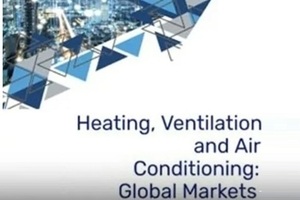
According to the latest research from BCC, the demand for heating, ventilation and air conditioning in the global markets is expected to grow from US$263.6 billion in 2023 to reach US$346.7 billion by the end of 2028 at a compound annual growth rate (CAGR) of 5.6% from 2023 to 2028.
Some Interesting Facts About Heating, Ventilation and Air Conditioning: World Markets
US consumers spend over $10 billion annually on HVAC repairs and maintenance, and this demand is expected to grow 1.5 times by 2028.
In the EU, heat pump sales are projected to more than double, from 3 million units in 2022 to 7 million units by 2030.
Switching to modern HVAC systems can reduce energy consumption by 50%, and integrating AI and more can save an additional 20-25% in energy.
1. Expanding industrialization: Expanding industrialization means more factories and advanced technology to produce goods. This leads to more jobs and better infrastructure such as roads and electricity. People move to cities for work, stimulating economic growth and raising the standard of living. However, this also causes environmental problems such as pollution that need to be carefully managed. Overall, it is about the growth of industry and the economy, changing the way people live and work.
2. Construction boom: A construction boom is a period when many new buildings and infrastructure projects are built. This includes houses, offices, roads and bridges. It is usually driven by economic growth, increased investment and increased demand for housing and commercial space. During a construction boom there are more jobs, more development and often noticeable changes in the landscape of cities and towns.
3. Technological advancements in HVAC systems: Technological advancements in HVAC systems have made them more efficient, smarter, and better for the environment. New systems use less energy, saving money and reducing emissions. Smart controls allow users to adjust settings remotely using their smartphones, while AI and IoT integration help systems learn preferences, predict maintenance needs, and optimize performance. Improved filters and ventilation also improve indoor air quality, making spaces healthier and more comfortable.